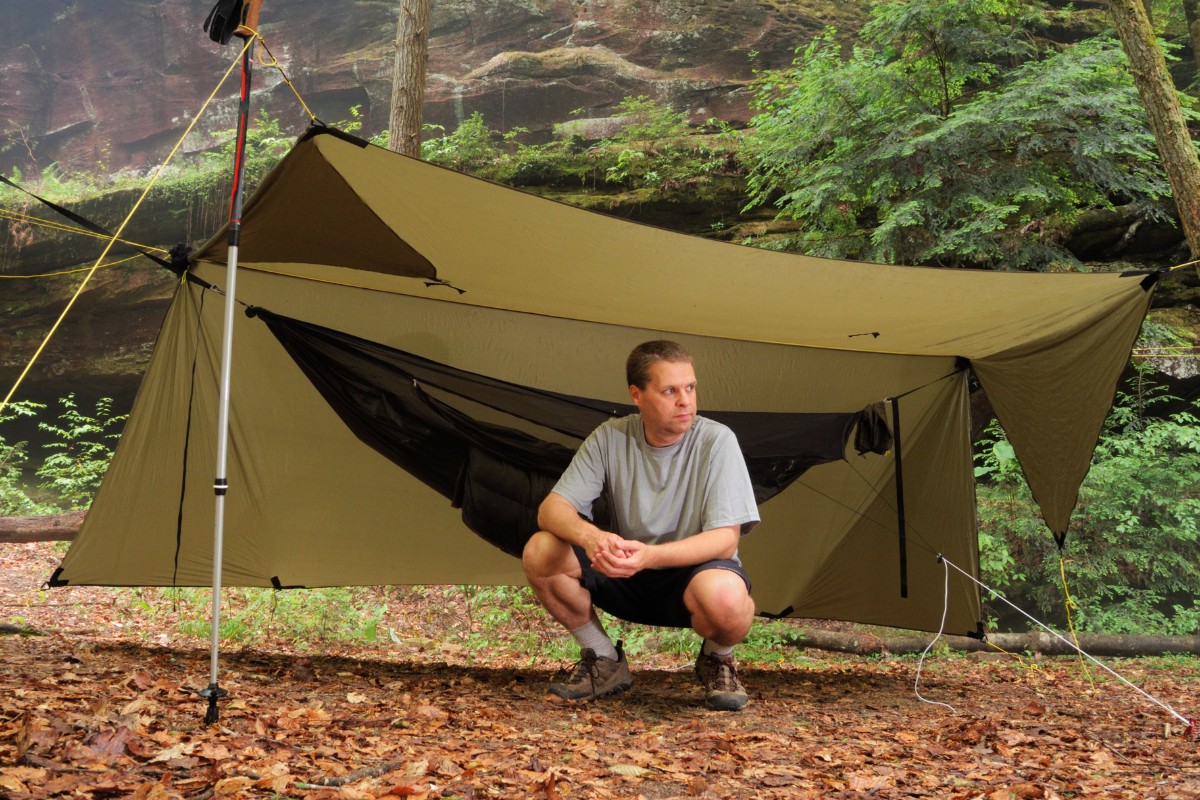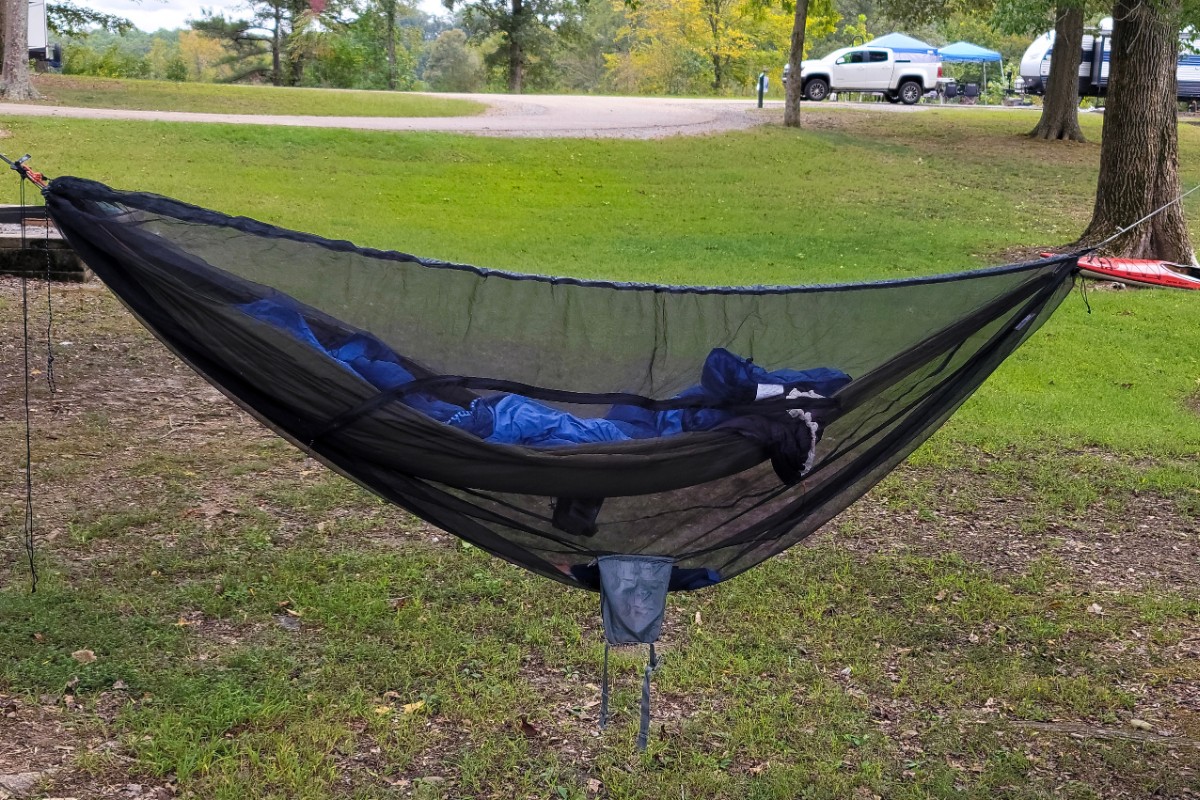There are many different types of hammocks on the market. One common style—hammocks with spreader bars—might have caught your attention when you were choosing one. Compared with hammocks without spreader bars (also known as Gathered End Hammocks), which style should you choose?
The answer is:
It depends. Hammocks with or without spreader bars both have advantages and disadvantages. For hammocking occasions and purposes, spreader bar hammocks are better for people who enjoy short periods of relaxation, such as full sun exposure at the beach, poolside, and garden. Non-spreader bar hammocks are better for those who use them for lounging, napping, sleeping, and pursuing long-lasting comfort for home recreation or outdoor camping.
In the rest of this article, the pros and cons of spreader bar hammocks will be explained to help you learn more about this style of hammock.
What Is a Spreader Bar Hammock
This type of hammock comes with wooden or metal bars at both ends, which serve to spread the hammock to its full width, making the surface flat and open to allow the user to lie straight. Typically, there are drilled holes along the length of the bar, and suspension ropes go through the holes to attach the hammock to fixed anchors.
Pros of Hammocks with Spreader Bars
- Spreader bars pitch the hammock surface tight and open, which is good for people who have a little claustrophobia when being wrapped around and desire clear surrounding views.
- Bed-like appearance, suitable for side sleepers, can effectively reduce calf ridge pain and shoulder squeeze, which happen in gathered end hammocks in a diagonal sleeping position.
- They can dry faster than other styles of hammocks when exposed to water due to their tight surface.
- Aesthetic, colorful, and tropical-looking, more inviting and stylish at the beach or in the garden.
Cons of Hammocks with Spreader Bars
- Spreader bars raise the center of gravity of the hammock higher, making it prone to flipping over when the occupant rolls to the side, requiring more balance control when lying in.
- Spreader bars usually weigh 2-6 kg and can’t fold up, adding extra weight to the hammock system. This makes the whole hammock bulky, more difficult to pack up, and less portable.
- Not suitable for use as a bed replacement, primarily taking a recreational role in daytime relaxing.
- Less comfortable and supportive than traditional non-spreader bar hammocks.
History of Spreader Bar Hammocks
The first hammock was created in Central America around 1,000 years ago. People in Mexico initially made hammocks from tree bark and gradually upgraded to fiber thread. Due to business trade, the use of hammocks spread to warmer South American regions like Brazil. All hammocks in ancient times didn’t have spreader bars and were in the gathered end style, so the non-spreader bar style is also called the traditional style or Brazilian style.
Then, in the 15th century, following Columbus’s discovery of America, the Spanish first used hammocks on board ships to fit more crewmembers, as they are narrower and take up less space than beds. When hammocks were later introduced into Europe, the curved and sagging shape wasn’t accepted by European culture, so people added spreader bars to the hammock to keep it flat like a bed. From then on, the rest of us have had the chance to enjoy this style of hammock for centuries to come.
What Types of Hammocks Have Spreader Bars
Rope Hammock
Rope hammocks are knotted by rope and look like a fishing net, with big holes on the surface. The rope is made of cotton or polyester; the former is soft and flexible, while the latter is durable and more weatherproof. Supported by wooden spreader bars at both ends to make the hammock open and flat, rope hammocks are iconic decor at the beach or tropical locations.
Nicaraguan Hammock
The Nicaraguan hammock is considered to be the most luxurious hammock for its double-sprung, tightly woven strings and crochet fringe ornaments. It’s a gorgeous relaxing spot in the backyard and is much welcomed in the US. Made from quality cotton, with spreader bars supporting the hammock open, this type of hammock is cozy for 1-2 people lounging at the same time, both indoors or outdoors by the poolside.
A poolside hammock, as its name suggests, is a type of spreader bar hammock placed near a pool or the seaside. Its special PVC-pretreated polyester fabric can withstand water splashes and sun bleaching. As a recreational hammock, the spreader bars add a more seaside and tropical vibe for resting.
Quilted Hammock
Quilted hammocks are made of two pieces of tightly woven polyester fabric stuffed with soft pads in between. Spreader bars keep the surface taut for lying flat. This type of hammock is soft and warm for winter and cold weather and often comes with a pillow sewn into it, so it is thought of as a hanging mattress.
Bridge Camping Hammock
The bridge hammock is a special type of camping hammock (more commonly seen in a gathered end style). Different from recreational hammocks listed above, the bridge hammock does not have a 100% flat lying surface; it’s more like half of a bucket. The occupant can lie relatively flat in it compared with curved shape camping hammocks, and it is especially friendly for side sleepers.
Hammock Chair
A hammock chair or swinging chair is a new variation of the hammock family, with only one spreader bar attaching the chair and suspension rope. This hammock-style swing is designed for one person who prefers to stay upright in the hammock with back support instead of lying down, often made of rope or fabric for comfortable reading, watching TV, or having a cup of coffee.
Conclusion
From the above detailed explanation, you should have a clear understanding of the advantages and disadvantages of spreader bar hammocks and be able to make a preliminary decision on whether or not to choose this style, and which specific type is suitable for you if your answer is yes.
Frequently Asked Questions
Can I Add a Spreader Bar to a Hammock
Yes, you can!
This usually refers to adding spreader bars to a gathered end hammock for a flatter and tighter lying surface. Instead of adding wooden bars with standard lengths and the correct number of drilling holes, which is hard to complete, you could add a mini-bar to the ends of the hammock with a little sewing while achieving the same effect.
If you have some talent for DIY and basic sewing skills, you could sew both ends of the hammock in a U-channel shape with some extra fabric, then drill out two holes at the ends of a PVC pipe or a wooden stick as a mini-spreader bar. Put Amsteel or another strong rope through the U-channel and the mini-bar holes to attach the hammock and spreader bar, and you’re done!
In this way, you can convert your camping hammock into a flat surface recreational spreader bar hammock for daily indoor and backyard use.
How Do I Adjust or Replace the Spreader Bar on a Hammock
If you want to adjust the distance between the spreader bar and the hammock, or replace a new spreader bar, you should loosen the spreader bar knots first. These knots are usually bowline knots that hold the spreader bar from slipping to the hammock, making them easy to undo and retie. Then, directly adjust to the correct length or run the rope through the new bar’s holes, and tie the knots again to finish it.
Can More Than One Person Lie on a Spreader Bar Hammock at a Time
Yes.
Spreader bar hammocks often have double size and king size options, with widths from 43 to 55 inches. They are designed to safely support 1-2 people lying in them at the same time.
Can I Take a Spreader Bar Hammock Camping
No.
Except for the bridge style camping hammock, all other types of wooden spreader bar hammocks are not portable and lightweight. No one will take a backyard spreader bar hammock to outdoor camping. Gathered end nylon camping hammocks are the first choice for most campers and hikers.








